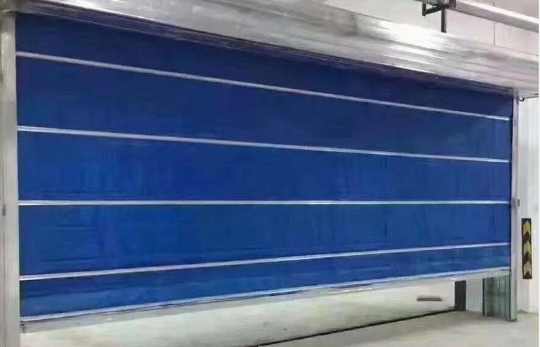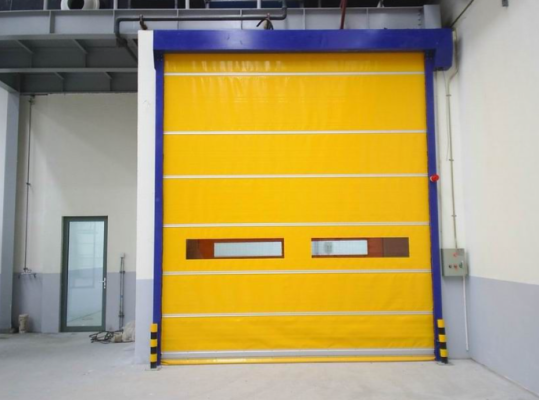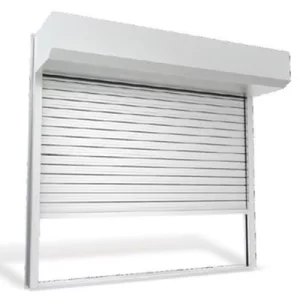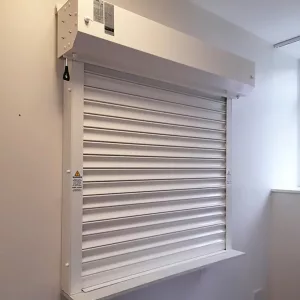Understanding Fire Shutter: A Comprehensive Guide for Fire Door Manufacturers
What Are Fire Shutters?

Fire shutters are fire-resistant and thermal insulation devices installed at the openings of buildings. Typically, the shutter remains rolled up in a housing box, automatically descending during a fire to provide crucial fire protection. Unlike standard commercial shutters, which serve primarily for security and aesthetics, fire shutters are designed specifically for fire safety. They feature fire-resistant materials in the shutter face, guide tracks, and housing, and can be controlled automatically or manually, often integrating with building fire alarm systems. All fire shutter products must be certified by the National Fixed Fire Extinguishing Testing Center.

Key Components of Fire Shutters
Installation Methods: Fire shutters can be installed either inside or outside the opening. This guide will illustrate the structure of an externally installed steel fire shutter.
Shutter Materials: Common materials for shutter faces include inorganic fiber composite, premium inorganic composites, and steel composites. For instance, the premium inorganic composite face features fire-resistant decorative fabric on one side and aluminum foil fiberglass on the other, which reflects radiant heat and enhances insulation.
Bottom Beam: The bottom beam, wider than the shutter panels, increases the sealing effectiveness when lowered, enhancing fire protection.
Guide Tracks: Fixed on either side of the opening, the guide tracks ensure the smooth operation of the shutter.
Support Plates: The main and auxiliary support plates are installed on the top of the guide tracks to support the motor and housing.
Rollers: The shutter is attached to a roller that enables it to roll up and down.
Base Support: In dual-rail shutters, base supports are added at the bottom for enhanced fire resistance.
Fire Motor: Also known as the fire motor, this component drives the roller to raise and lower the shutter.
Housing: The housing encloses the roller, shutter fabric, and fire motor.
Control Systems: Fire shutters feature control boxes and button panels, which can be mechanical or electronic. Electronic buttons include safety features to prevent accidental activation.
Why Use Fire Shutters?
Understanding the concept of fire compartments is essential. A fire compartment is a designated area within a building designed to contain a fire, preventing it from spreading. Fire shutters play a vital role in creating these compartments, effectively limiting the spread of fire and reducing damage while providing safe evacuation routes.
Where Are Fire Shutters Needed?
In designs where traditional fire walls are impractical, fire shutters can serve as effective fire barriers. They are particularly beneficial in large public buildings—like shopping malls and exhibition halls—where the area exceeds allowable limits for fire compartments. Fire shutters maintain spacious environments during normal operations but deploy automatically during a fire, thus creating independent fire compartments.
Key Parameters of Fire Shutters
Key performance metrics for fire shutters include fire resistance ratings, thermal radiation intensity, smoke control performance, and manual release mechanisms. Importantly, fire shutters should have a temperature-controlled release mechanism that activates when temperatures reach specified thresholds, ensuring timely deployment even if fire alarm systems fail.
Installation and Measurement of Fire Shutters
Fire shutter installation can be inside or outside the opening, with each method offering unique advantages. Accurate measurements of the opening height and width are essential for a successful installation, particularly in the presence of obstacles.
Pricing Considerations
Fire shutter pricing is typically based on the area of the opening. A standard fire shutter assembly includes various components such as the fire motor, control box, shutter fabric, guide tracks, and more.
Compliance with National Standards
All fire shutters must adhere to national construction and acceptance standards, such as GB50877-2014 and GB14102-2005. These standards specify installation requirements, testing procedures, and quality assurance measures.
Fire shutter
Conclusion Understanding the classification of fire shutter doors is essential for selecting the appropriate type for specific applications, ensuring optimal fire protection and compliance with safety standards. For high-quality fire shutter doors, contact leading fire door manufacturers for recommendations tailored to your needs.


